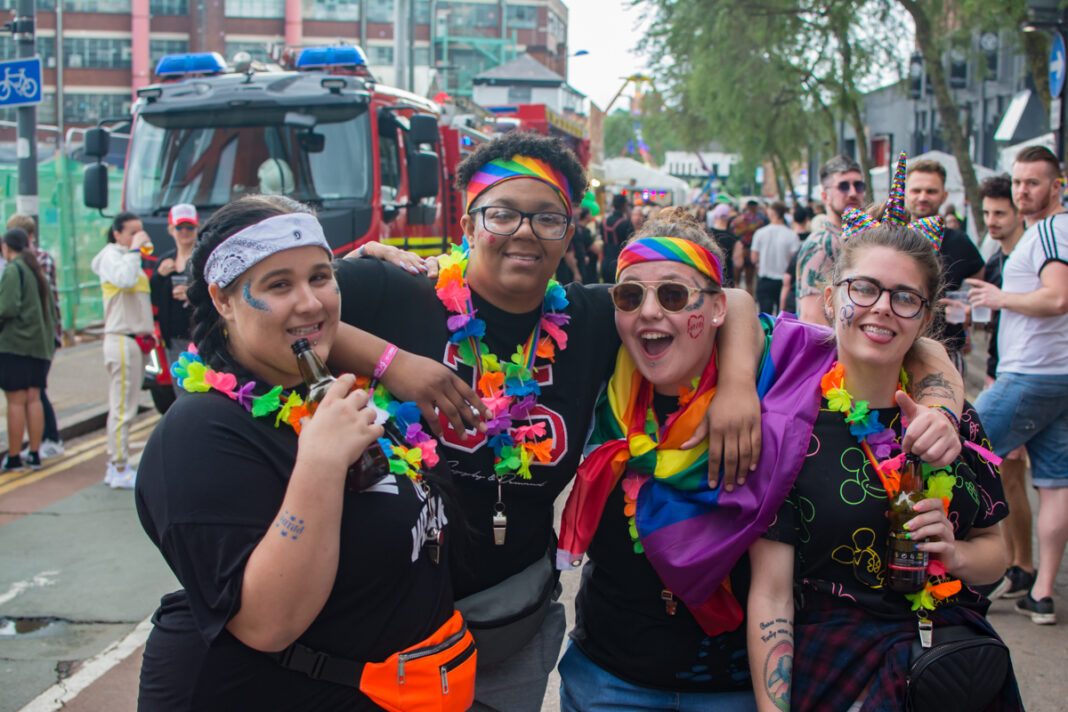Don’t let anybody tell you Birmingham is defined by its canals, though it has 56 kilometres of them and many of them are very pretty. Or by the River Rea, which helped the city become an industrial powerhouse, going back to the leather trade of the 16th century. Or by its hills, which are many. Or especially by anything royal—aristocrats are thin on the ground here in the U.K.’s West Midlands; Birmingham has a bit of an allergy to pomp and ceremony.
No, England’s second largest city (the sprawling metropolitan area has a population of more than 4.3 million) is defined by its people, nicknamed Brummies. And what people they are. Simultaneously cocky and self-deprecating, Brummies always seem up for a laugh and new friends. They’re always dreaming up a new future for themselves and their city.
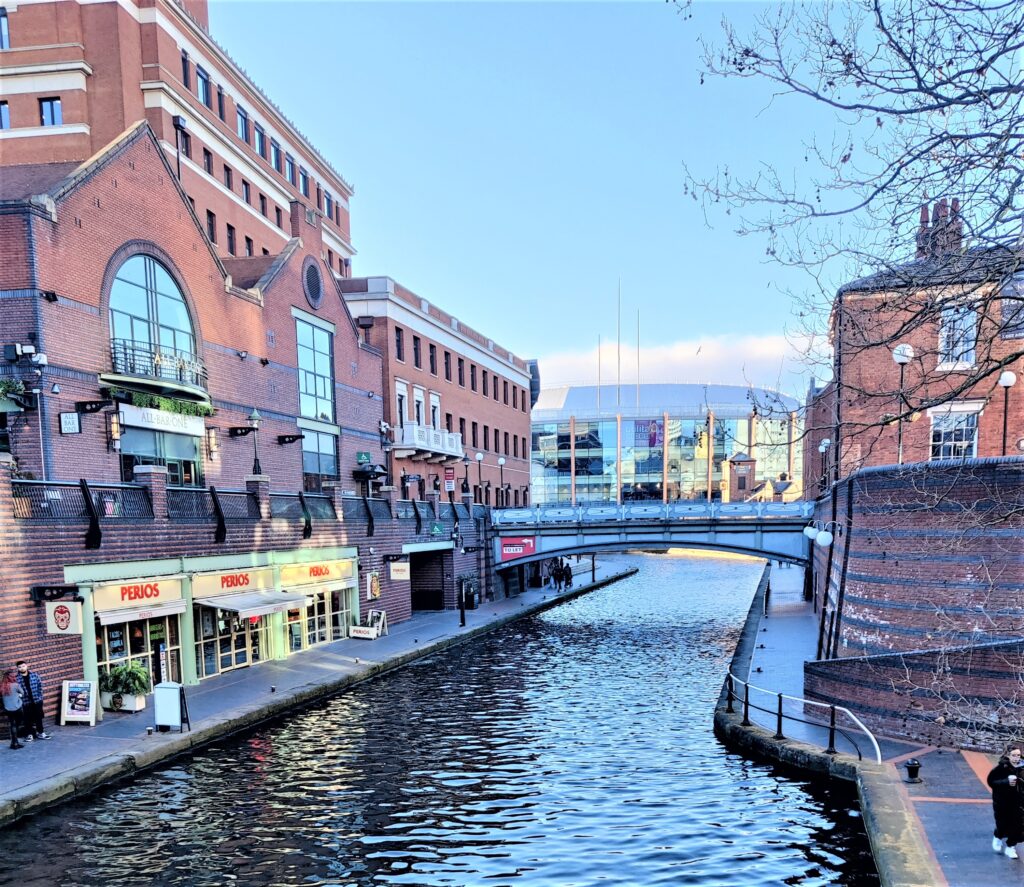
“We might be in the gutters, as Oscar Wilde says, but we’re staring up at the stars, aren’t we?” says Julia Robinson, manager of Birmingham’s Southside Business Improvement District, the home to the city’s Gay Village. The village, a funky mishmash of commercial properties and old workshops, garages and warehouses, overlaps with Chinatown on a pedestrian street painted with a massive rainbow-coloured circle. Robinson is giving me a tour of the local bars, none of them too far from the corner of Bromsgrove and Hurst. There doesn’t seem to be a single person she doesn’t know or who doesn’t know her.
“I want a rainbow light here you can see from space,” she tells me as we cross Hurst. “I want light everywhere so people feel safe, coming out any time of day, being themselves. Straight people like to come here now, because the bars are safe and fun, and people love the drag shows, but we need to make sure they know where they are.”
Robinson is always thinking ahead because she needs to—Birmingham is a city in constant transformation. The best metaphor for this might be the never-ending evolution of its commercial centre, which has at its heart the Bull Ring shopping area, a name going back hundreds of years and deriving from the hoop of iron that bulls were tied to before slaughter. The area was damaged extensively during the Second World War, and fell out of favour with shoppers in the 1950s. In 1964, a car-oriented mall opened there, taking up 9.3 hectares at the heart of the city. We’re talking about the better part of downtown. Though the shopping centre was considered the height of modernity, people very soon began to hate it. Plans to redevelop the Bull Ring began as early as the 1980s, and a new Bullring (one word) shopping centre opened in 2003, an indoor-outdoor mall attached to a shiny remodelled train station. The latest Bullring incarnation, better integrated into the historic streets that surround it, has been embraced and perhaps has inspired other redevelopment plans across the city—why live with something you hate, if you can fix it? In the last couple of decades, various Brutalist post-war structures across the city have been pulled down, replaced with light-filled and often playful buildings, a favourite being the shimmering Library of Birmingham, the largest public library in Europe, which opened to much love in 2013.
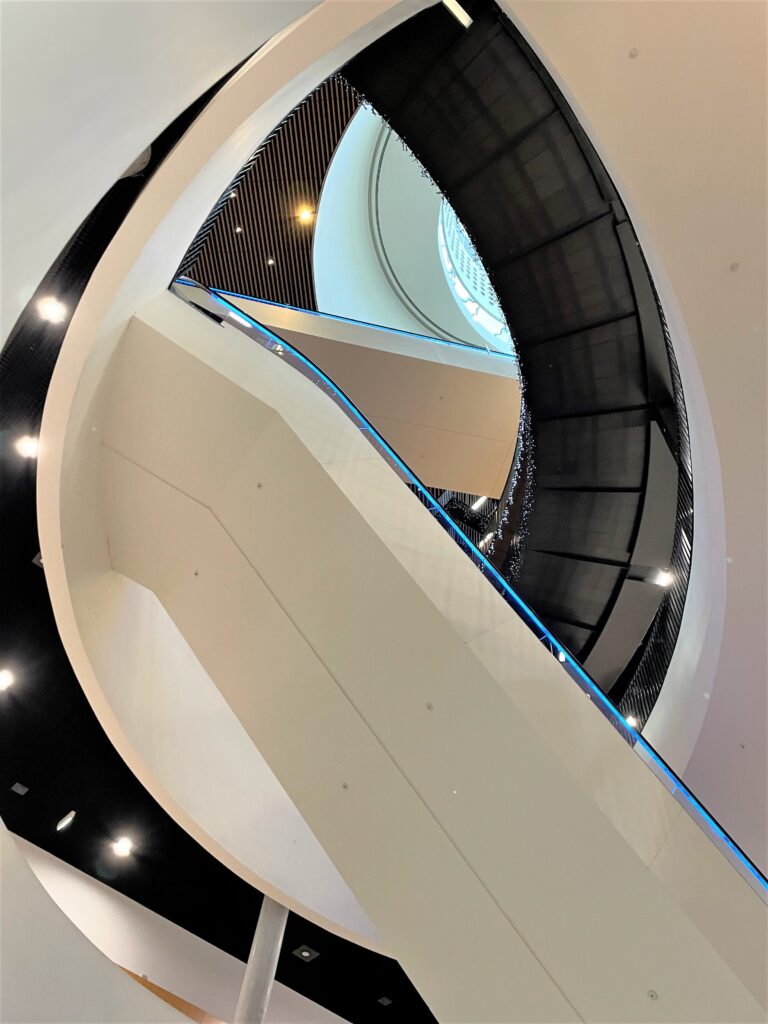
Piece by piece, again and again, the city renews itself: a new tram line is wending its way into the eclectic neighbourhood of Digbeth, the Birmingham Museum and Art Gallery is getting some retrofits, expected to be finished in 2024. A recent plan to redevelop Smithfield, a huge flat lot of land downtown which is the main site for Pride and other festivals, has triggered worries that the project could cut off the southside from the rest of the city. Meanwhile, plans to demolish the Ringway Centre, a very long curvy six-storey 1960s building, has also attracted ire. Walkways through the Ringway Centre, as well as through Smithfield, provide access to the Gay Village and Chinatown—so yes, all roads in Birmingham do converge at the rainbow.
Even if they’re split on what the city should look like, all this redevelopment gives Brummies something to talk about. And they like to talk. Robinson takes me to the gay bar The Fountain Inn (which is, of course, across from a massive construction site). She plays with a patron’s dog and catches up with barkeep before leaving me there to hang out with the guys. I offer my fellow customers some chocolate I have with me. Then another guy at the bar shares his candy around the bar. Suddenly, on this quiet Wednesday evening, everybody is talking and flirting. It’s that easy—share some chocolate.
Birmingham is also known as one of the U.K.’s “super diverse” cities, where residents from ethnic minorities make up more than half the population. That mix has also become foundational to what it is to be a Brummie. It should be no surprise that some of the more interesting bands that came out of Birmingham in the 1980s—UB40, Fine Young Cannibals, General Public—had members from different racial backgrounds. (Okay, okay, Duran Duran, Led Zepplin, Ozzy Osbourne, Black Sabbath and Judas Priest also came from Birmingham.)
Though Birmingham has had a reputation as a rough-and-tumble working-class city, and hate crimes against LGBTQ+ people remain a problem, it’s become increasingly LGBTQ+ friendly, particularly since the founding of Pride in 1997, which gave the community more visibility and confidence.
While the city centre and the Gay Village are especially compact and easy to navigate, the region, known as West Midlands—which includes places like the university town of Coventry—is large and scattered, with queer people of various income levels living in various towns and suburbs. So visitors might find queer art exhibits in Walsall New Art Centre and Pride in Wolverhampton, though both cities have populations of less than 300,000 each. But the greater West Midlands community converges on the Southside each weekend and at Birmingham Pride each May.
Ebullient joy is what they all share, the joy of living in the moment, even if the future remains uncertain.
With that, here’s the best of LGBTQ+ Birmingham.
Resources
Birmingham LGBT (38-40 Holloway Circus). With a high-profile location across the street from the Radisson Blu Hotel, this community centre offers programs and services mostly of interest to locals, but check out their events calendar; some of their social and cultural programming may be open to visitors.
What to see and do
Birmingham Pride (May 27–28, 2023). There are two main venues: Smithfield Live will have a mainstage, cabaret stage, dance area, street-food stalls, community-organization booths and other surprises; the Village Street Party provides access to the village bars which will be hosting events that spill out onto the street, where there will also be stalls and vendors. Both venues are ticketed, since Pride here is almost entirely self-funded.
Shout Festival (Autumn 2023). Hosted by Birmingham LGBT, this queer arts and culture festival takes place in venues across the city and region, celebrating and amplifying LGBTQ+ voices.
Wolverhampton Pride (June 10, 2023). This university city outside Birmingham proper hosts a surprisingly big Pride, this year featuring special guest and RuPaul alum Baga Chipz.
Library of Birmingham and Sky Garden (Centenary Square, Broad St.). We’re not going to discourage you from checking out the collection, but what we’re suggesting is to take the escalators to the third level, where you’ll find a landscaped terrace overlooking the city, and then to the seventh level, where you’ll find another quieter garden where events and exhibitions often take place.
Birmingham Museum and Art Gallery (Chamberlain Square). First opening its doors in 1885, one of the city’s best and most popular attractions is… unfortunately closed for renovations until 2024.
Midlands Arts Centre (MAC) (Cannon Hill Park). This is a family-friendly, easygoing and accessible cultural centre, with exhibition spaces, cinemas and a theatre. Queer art is often a part of the mix; a recent exhibit was dedicated to queer metal workers (more varied and intriguing than you’d expect) and a recent folksy-done-blockbuster project curated by celebrity artist and broadcaster Sir Grayson Perry included many queer and trans works.
Birmingham Rep Theatre (6 Centenary Square). You don’t have to wait very long or look very hard to find LGBTQ+-friendly programming at this well-regarded theatre, which is right next door to the library.
Where to stay
Malmaison Birmingham (The Mailbox, 1 Wharfside St.). The bold decor of this midsized hotel is a little bit 1980s (in the best sense), a little bit Vivienne Westwood and a lot of fun. Very close to Central Station and a 10-minute walk to the Gay Village. Bonus: it’s connected to a posh mall with a Harvey Nichols department store.
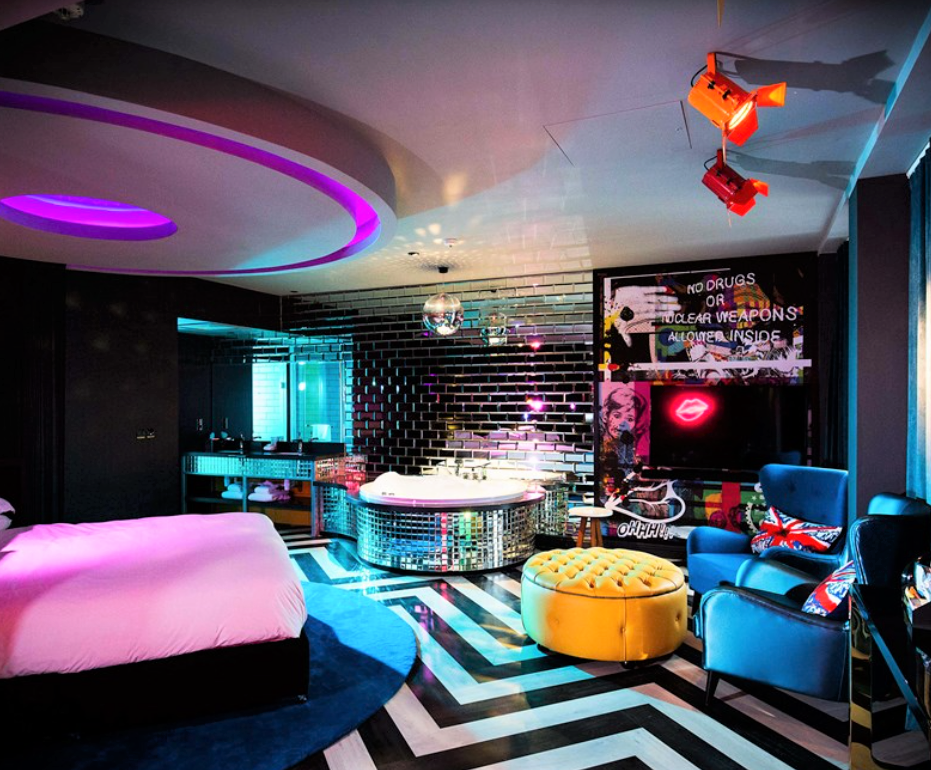
Radisson Blu Birmingham (12 Holloway Circus, Queensway). You can’t get much closer to the Gay Village than this. Located in a glass tower, the spa and gym are on the 18th floor, giving you an impressive view of the city while you work out.
The Fountain Inn (102 Wrentham St.) More on this venue under “Where to party,” but if you want to actually stay right in the village, they have rooms upstairs.
AC Hotel by Marriott Birmingham (160 Wharfside St.). The Marriott brand aimed at younger travellers who want clean, comfortable design with a dash of whimsy has a location adjacent to The Mailbox shopping centre, with easy access to lots of resto-bars and one of the city’s prettiest canals.
Where to eat
Medicine Bakery (69a New St.). There are four locations of this artisanal emporium of baked goodness, but this one, in a bright room that could easily be an art gallery (oh, actually it used to be the home of the Royal Society of Birmingham Artists!), is the one you need to visit. Come for breakfast or lunch and find yourself spending all afternoon here.
Canal House (12 Bridge St.). Hovering canalside like a boat house, this rustic-chic resto-bar has excellent views of the water and a menu of elevated pub food. Good for a gang of friends or even a date.
The Coconut Tree (35 Gas St.). You know walking in that this place, with its treehouse aesthetic, is run by cool people who love food and creating a chill environment in which to eat it. Of all the amazing Sri Lankan dishes on the menu, you’ve got to try a hopper, a bowl-shaped coconut milk pancake that you stuff with spicy bits. Heaven. Then order one of everything else.
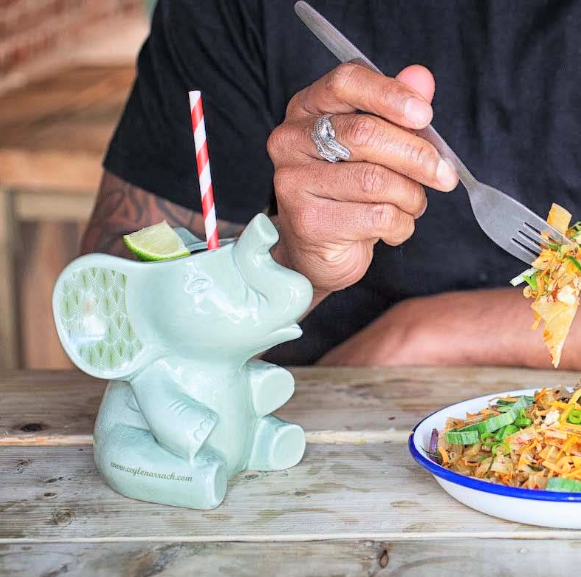
The Loft (143 Bromsgrove St.). That spot in the Gay Village where you can take anyone—your future spouse, your hookup from last night, your grandmother. A pub menu with something for everyone and a backyard terrace you can spend hours cocktailing on.
The Grain Store (King St., Wolverhampton). A historic pub with a kooky artifact-filled decor and a terrace that turns into a nightclub on the weekends. If you find yourself outside central Birmingham, this is a fun camp stop.
Where to party
Birmingham has lots of LGBTQ+ venues. These are our top picks.
The Fox (17 Lower Essex St.). The oldest gay bar in Birmingham’s village is also the one most frequented by women, though they also host events by footballers and a mature gay men’s group. Expect karaoke, drag kings and a Saturday dance party that will make you want to put your handbag down.
Missing Bar (48 Bromsgrove St.). Any day of the week, if this place isn’t rocking when you step inside, it could very well be in the next few minutes. The bartenders are super friendly. The first night I went, the DJ was yelling—in the campest most entertaining way possible—at the patrons for their shite singing-along to the Spice Girls. Patrons did get better as they went along.
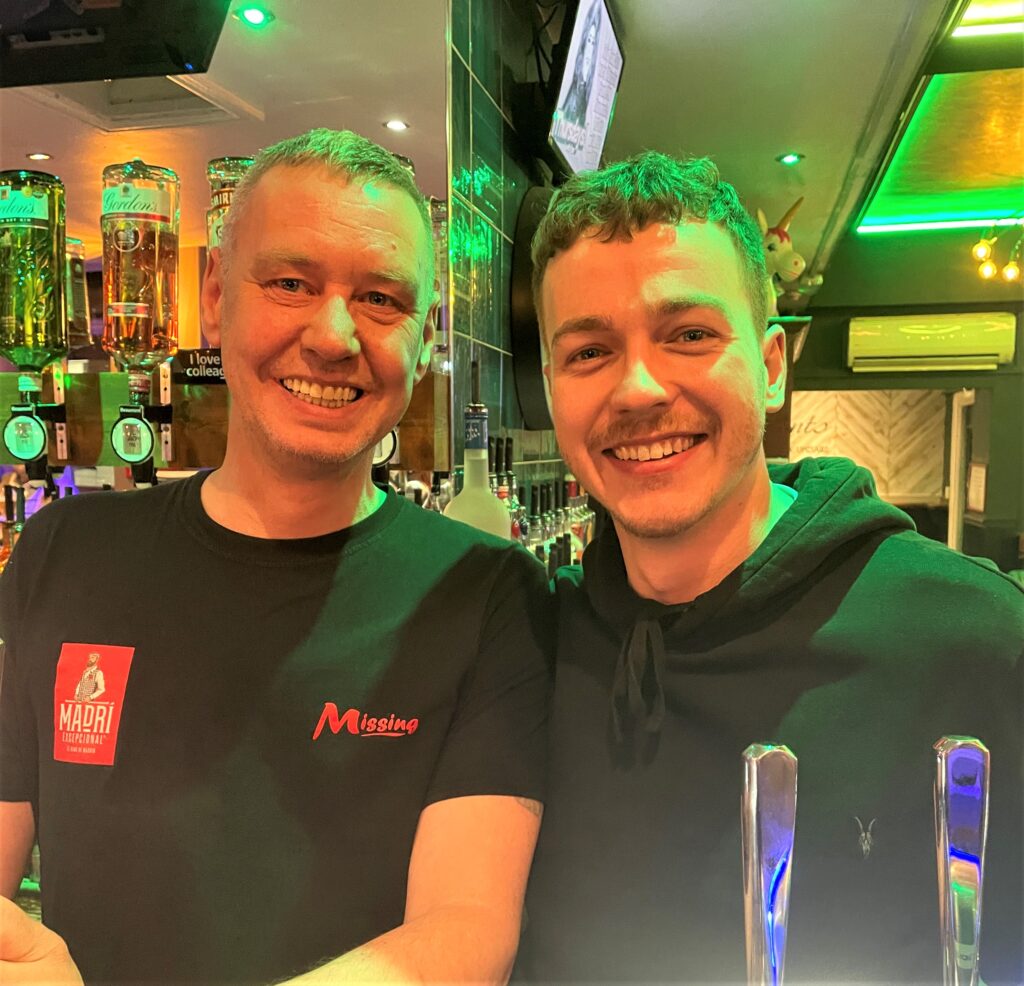
The Nightingale Club (18 Kent St.). The city’s biggest gay venue (capacity 2,000 in four rooms across three floors) is a legendary good time, with different musical genres on different nights. The place to go to dance your ass off.
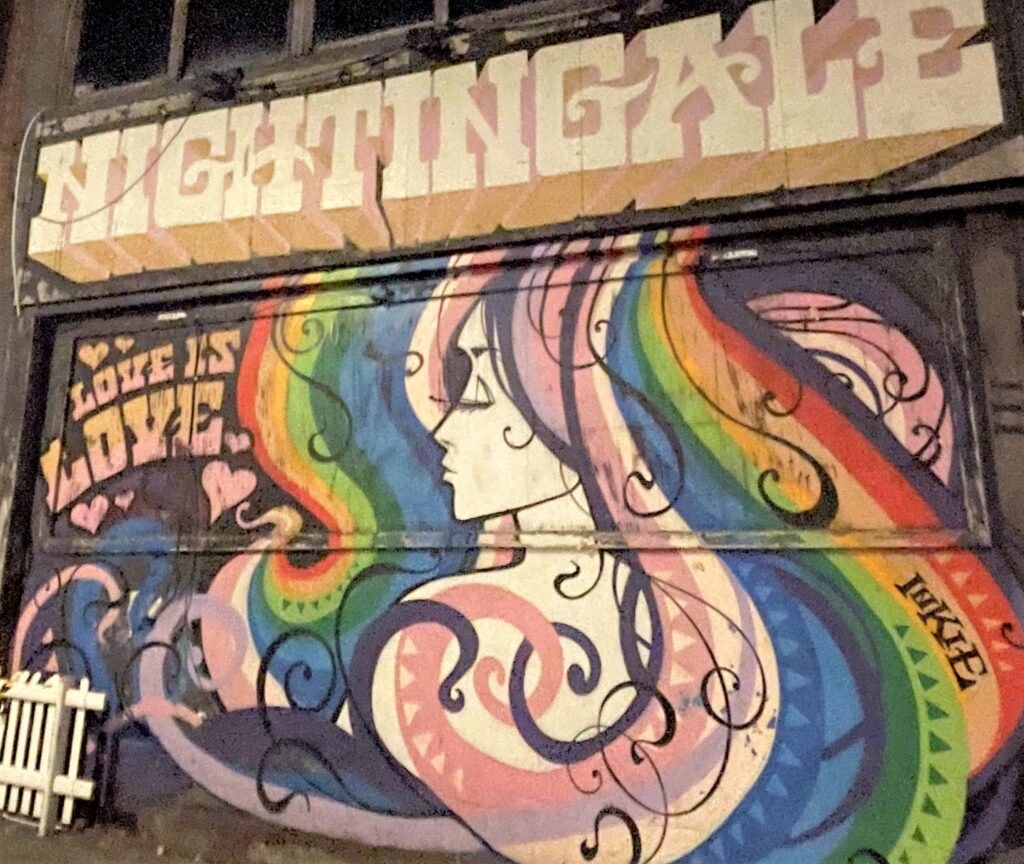
The Fountain Inn (102 Wrentham St.) You enter into a country club of a gay pub and think, Oh, how British. But the place is bigger than you first suspect and has a terrace, a room with a pool table and, though the rest of the venue is mixed, a men-only cruising era that looks like a hygienic version of a 1970s alleyway.
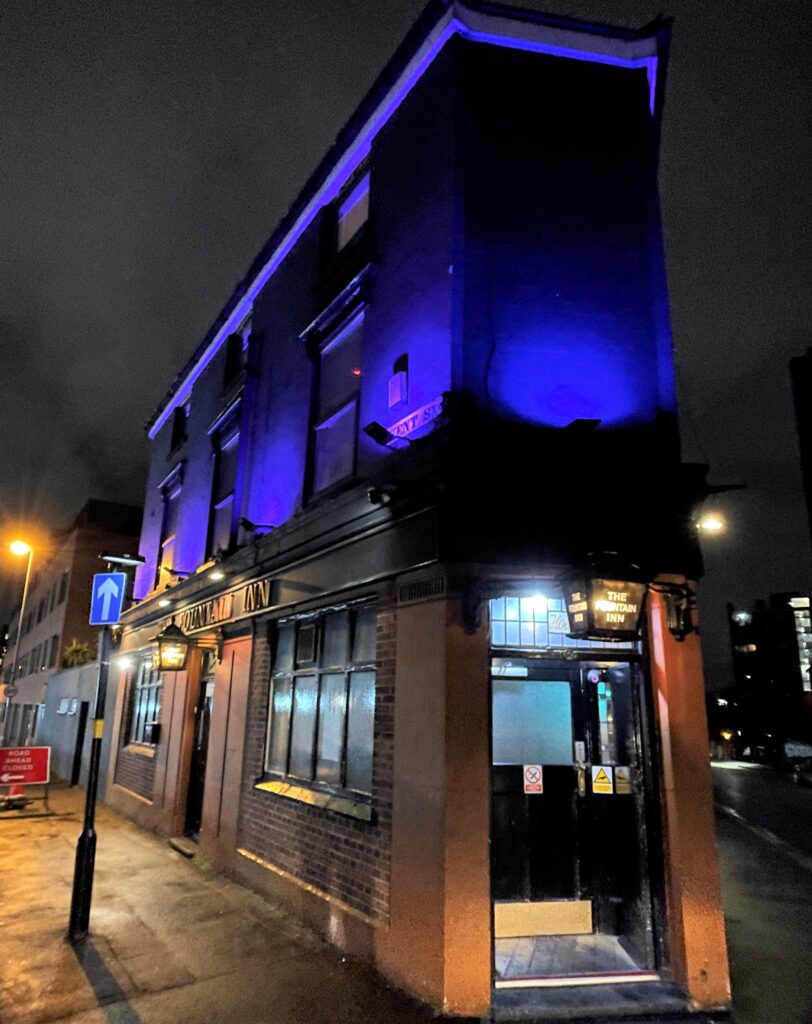
Sidewalk Bar (125-131 Hurst St.). A resto-bar for pretty much anytime of the day, they do brunch, lunch, dinner and shows, shows, shows. And very cheap cocktails with naughty names that are sure to get a conversation started.
The Village Inn (152 Hurst St.) Though lively any night of the week, this long-standing bar goes late on the weekends and can fluctuate wildly between camp and cool.
Boltz Club (Kent St. and Lower Essex St.). Bad-boy alert. This cruising club has a maze, a sling and gloryholes galore. It also has a friendly front bar that can be a good time even if you’re not looking for fun. It also hosts various parties including naked, sports kit and fetish events.
The Greenhouse Sauna Darlaston (Willenhall Rd., Darlaston). Located about a 40-minute drive outside central Birmingham, this sauna for gay and bi men advertises itself as the largest of its kind in the Midlands. Indoor pool with “spa cave.” Theme nights for bears. Its naked Wednesdays are the busiest nights.
Heroes Health Club (4 Lower High St., Stourbridge). Located about a 50-minute drive outside central Birmingham, this sauna for gay and bi men has a steam room, hot tub and rooftop lounge, as well as cruising areas. Thursdays and Sundays are no-towel mandatory nudity nights.
Editor’s note: The cost of the writer’s trip to Liverpool was covered by VisitBritain. The sponsors of the trip did not direct or review coverage. The views expressed are the writer’s own.
